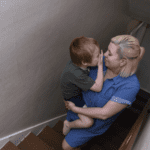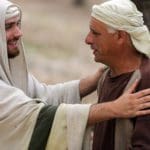There are many people who love to take a good road trip. Maybe it’s just an afternoon jaunt. Maybe it’s an overnight journey. Maybe it’s a few days visiting relatives a few hours away. In any of these circumstances, the potential exists to perhaps add an element of personal history with those we love. Let’s talk about taking a road trip to childhood and sharing memories.
Generating Memories through Locations
One important family function that parents, grandparents, or other relatives can promote in families is creating or passing on positive family memories. Reflect on any valued and positive memories that you may have experienced with your own grandparent, for example, such as a shopping excursion, a camping trip, or a meal together in a special location. How can you facilitate such shared and positive memories with your own family members?
Places tend to hold memories for many of us. These memories may be happy or else they might be heartbreaking. And yet, a trip to a specific location often brings us back to the memories that emerge for us when we are present there, and offers an opportunity to travel back in time and also bring those experiences into the present.
I have spent time recently as a contributor to a social media page that is shared for those who have memories of growing up in North Dakota, where I currently reside. It is quite fascinating to see the draw that pictures of a certain location often have for others. For example, I shared a photo from a friend’s history of a unique castle-like residence (“Coghlan Castle”) that her father and grandfather had helped to build as construction experts in a part of rural North Dakota. Within days, dozens of people had chimed in with their memories of that particular location and their own funny or unique memories tied to that particular location in a rural part of the state. Location holds memories, and so, taking advantage of the power of such places can be helpful in sharing family history moments.
What Locations Hold Special Interest or Meaning for You?
Take a few moments to think about a special location or two that might hold interest or meaning for you or another family member. What locations fit that description?
- A temple where you or someone else was married.
- A first apartment or home where you lived while attending college or working on your own.
- A place where you experienced an adventure—a good fishing trip, an outing with friends, or a memorable meal.
- A location where you went on a first date in a courtship.
- A site where a past family member experienced a significant moment or hardship.
Taking a road trip to such a location might bring back certain memories to share or an opportunity to connect loved ones with a part of your history.
Let me share a couple of examples of how a location can serve to bring history back into the present and be shared with others.
In my own life, there is a hike that you can take in the mountains above Provo, Utah, to a lovely waterfall spot known as Stewart Falls. Many have hiked to that location and enjoyed an outing. That particular spot holds a strong memory for me, however, because as a boy, my life was saved there by my father. It was springtime, and runoff was high; we had hiked there with a class of his students, and together he and I hiked higher up the small river that had swollen to a raging torrent. Without offering all the details, let me just highlight that a young boy (me) fell into the river and was on the verge of drowning, and the daring and courageous actions of my father saved my life, though he broke his leg in the process. I was but eight or nine years old. Many years later, I hiked to Stewart Falls as an adult with my daughter and shared my story of being rescued there by my father as a boy. That location has powerful emotions and memories for me.
On another occasion, my wife’s family held a large family reunion in LaGrande, Oregon. Her father’s side of the family had lived on that location for a couple of generations and settled down in that lovely eastern Oregon community. Tragically, it was where my wife’s great-grandfather, Victor Bean, had lost his life in his middle years, unexpectedly in a logging accident. He left ten children behind to make their way in the world with a loving but bereft mother. During the reunion, the family rented a school bus, and we traveled a few miles outside of LaGrande to the hillside and location where Victor Bean’s life had ended in difficult circumstances, and there we listened and learned more about this good man and the legacy of faith he left behind, as well as the accident that ended his life. The hillside, the rural landscape, and the gathered descendants of Victor Bean—all combined in this location to transmit a clear memory of this event and location that changed the experience of a family.
Connecting Through a Road Trip to the Past—Make a Plan
One of the fun family history activities that you might plan is to give a loved one, such as a child, sibling, grandchild, or other loved one, a “guided tour” of a piece of your past. Connecting through a road trip to the past can be a fun and memorable activity to plan and engage in.
Many of us have locations that are special to us or hold personal significance. Examples might include the place where you worked at a first job, the spot where you got engaged to marry, or the home where you brought up your first child. Of course, there might also be many such locations in your family history. Consider one or two “special locations” from your history and make a plan to visit that location with a family member. Perhaps you will share it with a spouse, a sibling, a child or grandchild, or someone else meaningful in your life. Where will you go on your road trip to the past? What do you want to do on that trip? What would you like to remember and share?
Here are possible examples of things you might do:
- Tour or visit the church, courthouse, or other location where you were married, if possible. Describe the ceremony and your wedding day. Share pictures and memories of that experience.
- Visit a location where you did holiday activities. Perhaps you visited a Christmas tree farm and cut down a tree, played in a “Turkey Bowl” for Thanksgiving at a local park, or did one of a hundred other holiday activities. Walk through your memories and share those experiences.
- Take a walk or a drive through the neighborhood where you lived while growing up. Notice how it has changed versus how it has remained similar. Who lived next door, down the road, or on your block? Record video explaining where you lived, spots in the local community, or places that had special meaning as you were growing up. These might include grocery stores, places of sports competition, or places you played or went to church.
The possibilities are limited only by your imagination. The important thing is to sit down, make a list of four or five places that you’d like to see or share about, and plan a little road trip to share the experiences you had there. If travel is difficult, you might plan a “virtual road trip” using pictures from that location or information online.
Examples of Connecting Through a Trip to the Past
Let me wrap this article up with a couple of brief examples of connecting through a trip to the past.
During his years as President of the Church, President Gordon B. Hinckley had the opportunity to make a visit to the region of Preston, England, where he dedicated a new temple. He had served in that region as a young missionary during the Great Depression years. The Preston area was his first area of service. On this trip, I noticed that he returned to the site of his first missionary apartment, and the room where he lived and studied—and where his life changed. He told of a significant story, in which he responded to a father’s letter and a missionary lesson to shift his perspective and re-commit himself to greater spiritual service. He noted in visiting there that it was a special location for him because in those rooms, the direction of his spiritual life was altered significantly and affected him for the greater good. A great example of connecting to the past and sharing a memory from his personal history.
Taking a lesson from this experience, upon my father’s retirement, I called him up and suggested that he and I take a road trip to Arizona. He had served there many years before, among the Navajo people and other Native American peoples as a Latter-day Saint missionary. The two of us took along a grandson as well, and then made our way through the back roads and little towns across part of the great Navajo homeland. We walked among the cedar trees. We visited hogans, where he had lived and taught. We visited small chapels where he had preached the gospel. It was a memorable and precious trip down memory lane for him, me, and this grandson.
We came home, and he shared about that trip and the rich memories that flowed from it. Not much later, his younger brother, who had also served as a missionary among the Navajo people, told us of a trip he had planned with some children to visit his missionary memories in the Navajo homeland. Our trip had prompted this idea for them, and it also turned into a memorable trip for this dear uncle of mine. Now my father has passed on, but when my uncle and I talk, we return to memories of those trips to a location that shaped both him and my father in their youth and across a lifetime.
Do yourself a favor. Connect with some memories and share them with loved ones by making a road trip to the past to a location that has meaning for you. It might be only half an hour, or half a day, or whatever works for you—but get planning. Take a road trip to the past and connect with your loved ones in the present by sharing the memories that have shaped a part of your life.




















